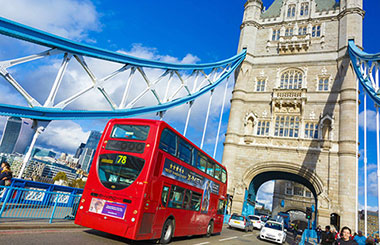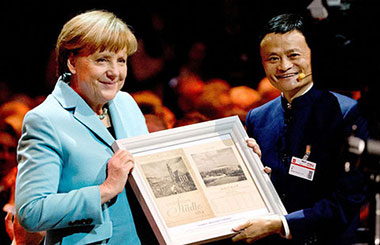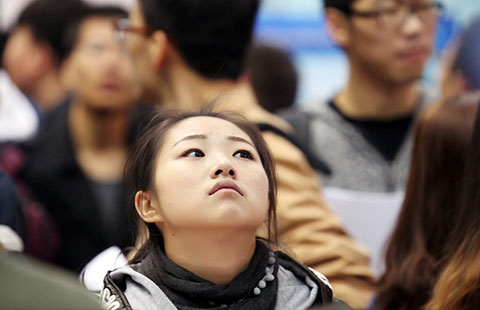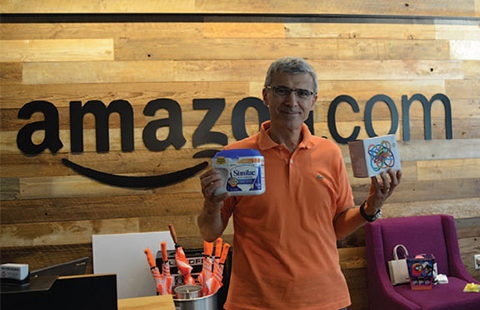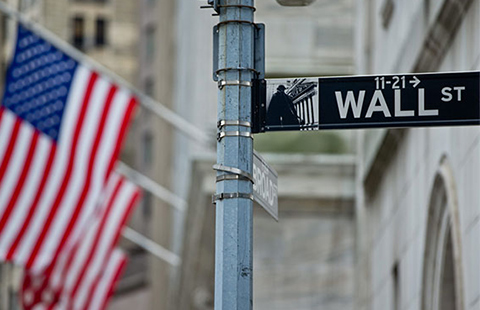Early Single's Day sales a trademark for Chinese consumption
(Xinhua) Updated: 2015-11-11 09:41BEIJING - This year's message to China's online shoppers is clear: You don't have to wait until Single's day on Nov 11 to snatch a deal for the 24-hour shopping spree.
Subway platforms and sidewalks have been plastered with ads by Alibaba and JD.com, among others, since the start of the month urging shoppers to check their smartphone apps for early promotions.
The discounts have arrived weeks ahead and are likely to linger after the world's largest online shopping day concludes.
JD.com said they opted for a multi-day shopping campaign to reduce the sense of urgency that consumers feel during the 24-hour window.
Its chief rival Alibaba has gone a step further, allowing their financial arm Ant Financial to extend more credit for women shoppers to boost buying.
Both retailers and policy makers are keen to see the Single's Day sales boom last more than 24 hours. China's new five year plan released last week also made it clear that consumption should play a "fundamental role" in future China's economic growth.
"The re-balancing is already happening in China, given the steady rise of consumption as a share of GDP," said Wang Tao, chief China economist at UBS. "A spate of government policies such as improving social security, reducing tax burden and raising minimum wages have all supported consumption."
The slowdown in property investment has also lifted the relative share of consumption in the economy, he said.
China now has nearly 150 million middle class with per capita annual income of more than $11,000, according to Goldman Sachs. Another 236 million blue collar and migrant workers earn nearly $6,000 on average each year.
It also found Chinese consumers spend almost half of their income on food and clothing, compared with less than 20 percent for Americans.
Going forward, consumption growth will be led by entertainment, health, education and technology, the company said.
China's Millennials, born between 1980 to 1989, are leading the charge with credit cards in hand.
"Millennials have different (often more western) tastes and preferences than older generations and will increasingly drive spending in these categories as they enter their prime consumption years," said Goldman Sachs analyst Joshua Lu, noting the importance of e-commerce in that drive.
Last year, e-commerce accounted for 11 percent of China's total retail sales. It is set to double its share by 2020, according to consulting firm Bain & Company.
The country's online retail scene has evolved to a point where traditional brick-and-mortar stores and brands are in awe of online success and trying to follow suit.
E-commerce matters even more to consumers in China's lower-tier cities, where underdeveloped retail infrastructure is limited.
"It's not like the United States where big retailers like Costco and Walmart can be found in small cities," said Ding Jie, a partner at Bain & Company. "For China's small cities and towns, digitization has arrived before industrialization."
Though few would dispute the growing role of consumption in China's future growth, analysts say the economy's re-balancing could take a lot longer than people think.
Rating agency Standard and Poor's found that Chinese companies have appeared more resilient financially to the ongoing economic slowdown than firms in resources, manufacturing and sectors saddled with overcapacity. But the latter's capital expenditure and access to refinancing have remained robust despite economic challenges.
"Both the government and banks are trying to smooth out the exit for overcapacity, lest a fast-moving process leads to a surge in bad loans," said Lawrence Lu, senior director for Standard & Poor's corporate ratings, "that said, the economic transition toward consumption will take a long time."
Besides, unleashing consumption demand takes more than just promotion. Government policies have a far more fundamental impact.
"Sustained consumption growth needs to be supported by rising income," UBS's Wang said, "so expanding social security coverage, increasing employment and productivity are all parts of the jigsaw puzzle."
Authorities have also reiterated its goal of doubling GDP and household income by 2020 from the 2010 levels and pledged to grow income in line with productivity gains and economic growth.
For retailers, it's time to look beyond Single's Day. Many have promised more deals after the party or simply more promotions all year round.
"It doesn't make much difference if sales shoot up on a single day and drop back down the next. Single's Day should instead mark a beginning of deeper engagement with consumers," Bain's Ding said.
- China's electric car production surging
- Shopping spectacular will boost bottom line
- Shopping spectacular will boost bottom line
- China to be largest source of FDI, surpassing the US
- DealMoon spreads online cheer to Chinese diaspora in US with discounts
- CGN wins $7.7b Romanian nuclear deal
- Anbang set to buy US insurer Fidelity for $1.57b
- Gala to set the tone for shopping bonanza
